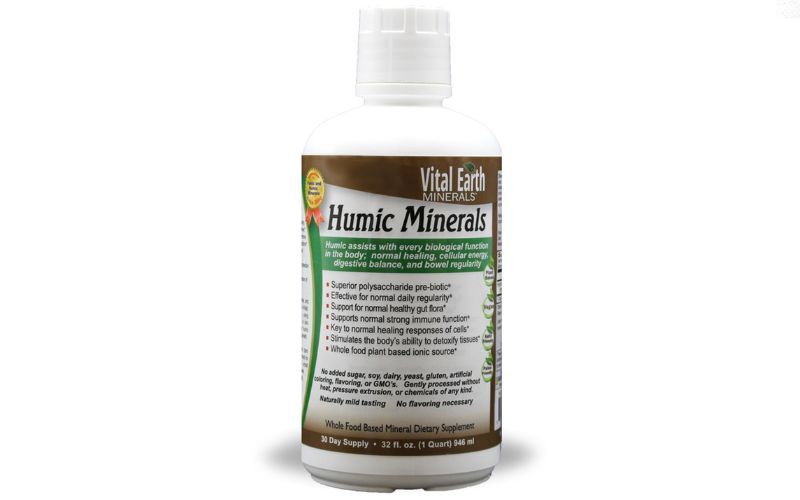What Food Sources Contain Humic Minerals?
2nd Jun 2025
Humic minerals are organic compounds made mostly of humic and fulvic acids. They form from the breakdown of plant and animal materials over many years. These substances are integral to soil health, influencing nutrient availability and plant growth. While humic minerals are not typically present in significant amounts in most foods, certain dietary choices can help increase their intake.
Understanding Humic Minerals
Humic substances are highly complex organic molecules formed through the microbial degradation of organic matter. Humic substances are primarily found in soil, peat, coal, and sediments. They contribute to soil fertility by improving the uptake of nutrients, the structure of the soil, and microbial growth. Humic acids are also recognized to chelate minerals and trace elements, making them available to plants and, in turn, to humans upon consumption.
Fruits and vegetables are lacking in important minerals because of modern farming methods. Taking supplements made from whole food-sourced humic is best to ensure you get the minerals you need daily. No matter how hard they try, scientists find it difficult to replicate humic or create substitutes. One of the best sources of these essential nutrients is Vital Earth Mineral Humic Minerals, a top-of-the-line supplement formulated from fertile, naturally sourced humic compounds.
Experience the power of humic minerals for better energy, nutrient absorption, and overall wellness.
Natural Sources of Humic Minerals
Although the direct ingestion of humic minerals is rare, some foods carry minute traces due to their cultivation in mineral-sufficient soils or natural properties.
1. Root Vegetables
Root vegetables such as beets, carrots, turnips, and radishes grow in the soil, absorbing minerals and organic compounds during development. These vegetables can contain trace amounts of humic substances, especially in mineral-rich, organic soils. Consuming these vegetables, particularly when grown organically, can contribute to consuming humic-related compounds.
2. Sea Vegetables
Sea vegetables, such as varieties of seaweed like nori, dulse, arame, and kelp, contain minerals and trace elements. Seaweeds pick up nutrients from the seawater directly, and in seawater, dissolved organic material can be present, similar to humic substances. Adding sea vegetables to the diet will offer a natural source for these molecules.
3. Blackstrap Molasses
Blackstrap molasses, a by-product of processing sugar cane, is heavy in minerals like iron, calcium, magnesium, and potassium. The mineral composition of molasses will depend on the nutrient content of the soil in which the sugar cane is cultivated. Although not a direct source of humic minerals, its mineral profile may yield some humic-associated benefits.
4. Organic Produce
Fruits and vegetables produced in organic soils containing much organic matter and microbial life are more likely to harbor trace levels of humic substances. The lack of synthetic pesticides and fertilizers allows plants to naturally build up these compounds within the soil, which plants can take in.
5. Fermented Foods
Fermentation is a process that naturally increases the bioavailability of minerals and advantageous microbes. Fermented foods such as kimchi, sauerkraut, kefir, and kombucha do not necessarily contain humic minerals themselves but can promote gut health, which enhances the body's capacity to absorb trace minerals. Certain ferments, particularly those involving root vegetables or herbal infusions, might contain residual humic-like substances.
6. Medicinal Mushrooms
Mushrooms like chaga, reishi, and cordyceps develop on rotten organic substance, frequently in rich-humus forest soil. Fungi have nutrients removed from the environment around them, such as trace minerals and organic substances. Although not a source of humic acid, medicinal mushrooms will sometimes have bioactive compounds similar to humic acid with detoxifying and immune-enhancing activities.
7. Peat-Based Foods and Supplements
Peat, a humic-rich precursor to coal, has long been employed in traditional medicine in certain cultures. Peat extracts can provide concentrated humic and fulvic forms when processed and cleaned into supplements. Specialty teas and tonic preparations include peat or plant material rich in humics to add mineral content.
8. Dark Green Leafy Vegetables
Leafy greens like spinach, kale, Swiss chard, and collard greens are naturally high in minerals such as magnesium, calcium, and potassium. When grown in rich, organic soil, these vegetables may contain small amounts of humic substances absorbed from the soil. Eating various raw or lightly cooked greens helps preserve their nutrient density.
9. Compost-Grown or Biochar-Enriched Crops
Crops produced with regenerative agriculture methods, like those that have been composted or biochar fertilized, usually benefit from greater humic substance access in the soil. These practices replenish humus and microbial communities, supporting a natural buildup of humic and fulvic acids within plant tissue. While seldom marketed specifically as "humic-rich," crops from such systems may provide greater trace mineral availability.
10. Herbal Teas and Extracts
Herbal teas of roots, barks, and leaves—such as nettle, burdock root, dandelion root, and alfalfa—frequently draw minerals and organic acids from deeper soil. These herbs might have trace amounts of fulvic or humic compounds based on how and where they are cultivated. Nettle tea, for instance, is very mineral-dense and might naturally contain chelated trace minerals.
11. Organic Whole Grains and Legumes
Whole cereal grains like oats, quinoa, barley, and millet produced on healthy, organic soils may carry minute traces of humic substances, especially with intact bran and germ. Legumes like chickpeas and lentils might also hold onto trace minerals acquired through growth in rich, humus-filled conditions.
Conclusion
Although direct food sources of humic minerals are scarce, some foods and supplements may offer trace levels of these valuable compounds. Consuming organic, mineral-dense foods and supplements such as Vital Minerals' humic minerals may increase one's intake of humic compounds, promoting overall health and well-being.
Frequently Asked Questions
Can I obtain humic minerals through my normal diet?
Though most diets are not a good source of humic minerals, eating organic root vegetables, sea vegetables, and supplements can increase one's intake.
Are there any health advantages to eating humic minerals?
Humic minerals promote nutrient uptake, detoxification, and overall cell health.
Is it healthy to take Vital Earth humic mineral supplements?
Vital Earth humic mineral supplements are generally considered safe when taken in recommended doses. However, it is always advisable to consult with a healthcare professional before starting any new supplement regimen to ensure it’s appropriate for your health needs.






